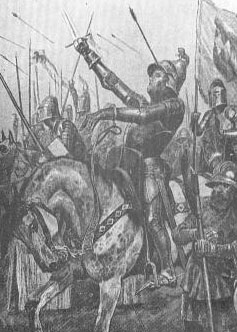Shakespeare's genius in character and plot development is exemplified in two of his most complex history plays, Richard II and Henry IV, Part I. With these sequential plays, Shakespeare vividly develops characters and sets up complicated plots by juxtapositioning people with others. Specifically, he first creates a binary opposition between Richard and Bolingbrook in Richard II, and then, recalls the plot and carries out an almost mirror image character contrast with Hal and Hotspur in Henry IV, Part I. However, in typical Shakespeare fashion, the seemingly mirror-image binaries of Richard/Bolingbrook and Hal/Hotspur break down with Shakespeare's character complexity.…show more content…
Upon hearing of Hotspur's successes in battle, Henry IV compares Hotspur to his son. He declares, ì[w]hilst I, by looking on the praise of [Hotspur], /[s]ee riot and dishonor stain the brow / [o]f my young Harryî (I.i.84-86). This opposition between Hal and Hotspur is emphasized in the following scene, where we find Prince Hal in the tavern with the drunken Falstaff, while his rival, Hotspur is preparing for a rebellion. These first two scenes set up a contrast between Hal and Hotspur that seems to recreate the Richard/ Bolingbrook binary. Hotspur appears to be like Bolingbrook, in that he will fight for what he feels is owed to him, and Hal acts like Richard, in his reveling with base tavern buddies.
Prior to battle, the King continues to perceive a similarity between himself, as Richard's challenger, and Hotspur, as Prince Henry's challenger. He articulates to Prince Henry that the battle against Hotspur is a reflection of his and Richard's rivalry: ìAs thou art to this hour was Richard then / When I from France set foot at Ravenspurgh; And even as I was then is Percy nowî (III.II.94-96). Even though the King is threatened by Hotspur's advancements, he admires his grit, and envisions a strong resemblance between the valiant young Hotspur and himself. But if King Henry is looking for the person that most resembles him, he should go to the taverns and ask for Sir Jack Falstaff.


Compare And Contrast Hal And Hotspur Vs
Contrast Falstaff's View Of Honour With The Views Of King Henry, Prince Hal And Hotspur Contrast Falstaff’s view of honour with the views of King Henry, Prince Hal and Hotspur The views of honour throughout the play are quite different in terms of different. 358 Words; 2 Pages; Compare And Contrast City And Countryside. Throughout the play we witness Hotspur's fall from grace and how it coincides with Hal's gradual ascendancy. Hotspur's rise and fall is largely linked to the turnout of important events in the play. Hotspur showed personal qualities that were rare in a person. He was generous, energetic and honourable. Although it was historically accurate that King Henry, Prince Hal (Henry Prince of Wales), and Hotspur (Henry Percy) shared a name, Shakespeare uses this fact to the play’s literary advantage: the three Henrys each illustrate a different way of being king and the contrast between them prompts the audience to consider what qualities are best.